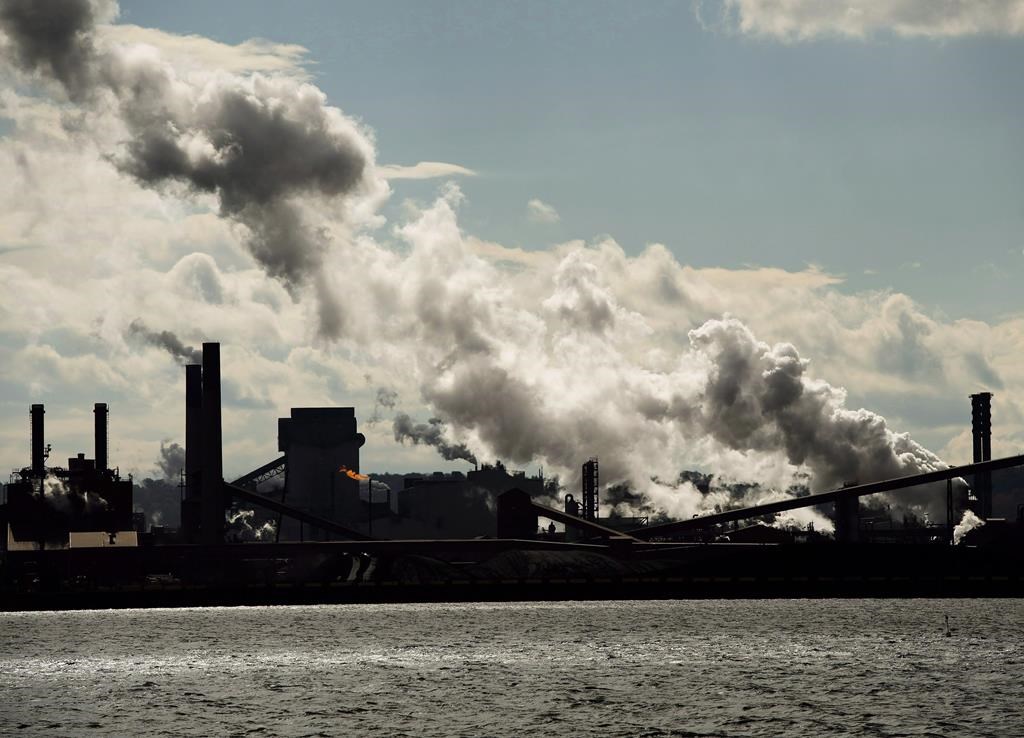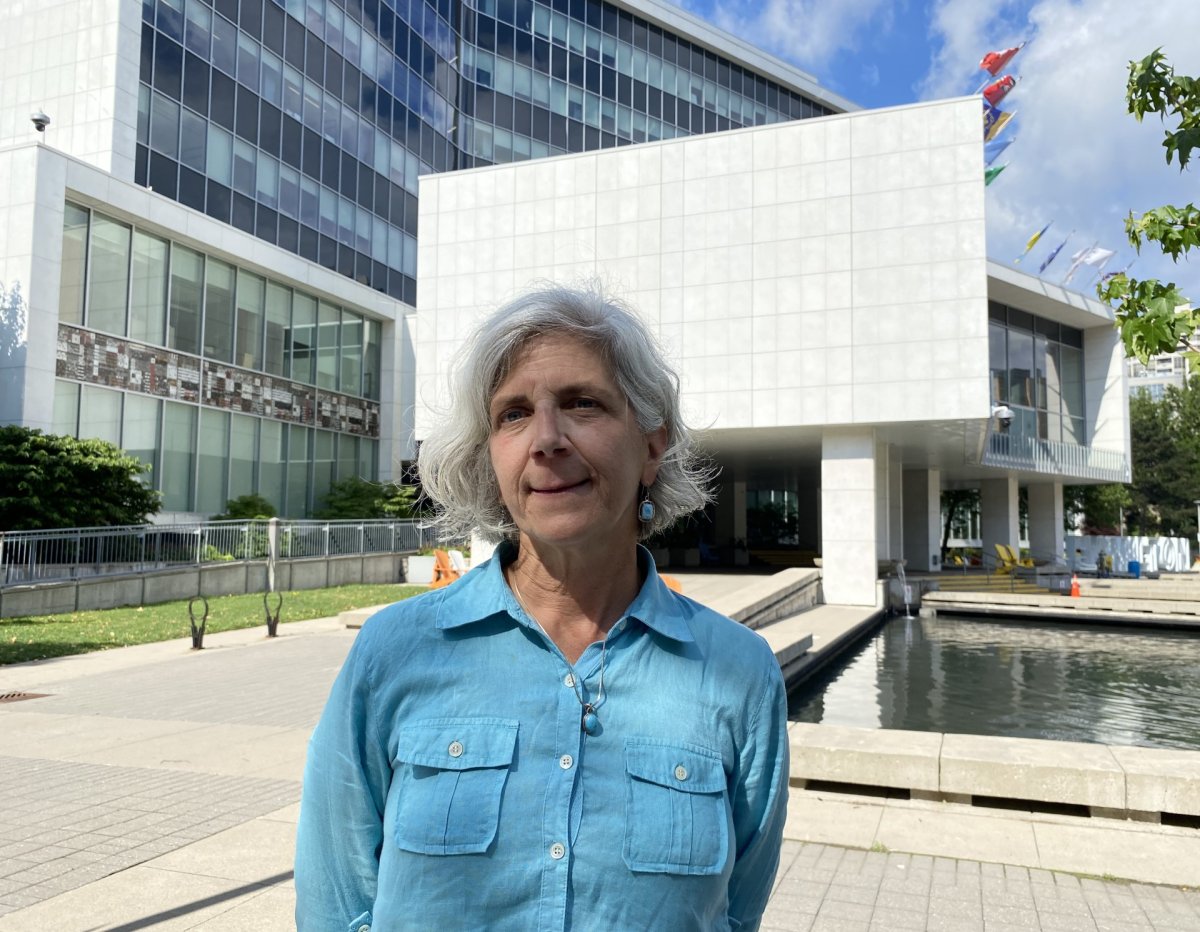Hamilton’s carbon emissions climbed an estimated five per cent in 2022, according to a new report by The Atmospheric Fund (TAF), making the city the largest emitter in the Greater Toronto and Hamilton Area (GTHA).

The report shows the city’s emissions reached 16.2 tonnes carbon dioxide equivalent (CO2eq) per person, which is about double the amount of other regions.
Even excluding Hamilton’s sizable industrial sector from that figure, the city still remains at the top of the list with emissions at 8.7 tonnes CO2eq per person.
“It’s challenging and not great to see we’re seeing an uptick,” said Lynda Lukasik, director of the city’s office of climate change initiatives and former executive director of Environment Hamilton.
“I think a lot of people were very hopeful that we might, rather than returning to the normal that existed pre-pandemic, that we might see the pandemic facilitating some changing behaviours that would help with climate impacts.”
Ekaterina Tzekova, director of research and innovation at TAF, said though emissions increased across all GTHA regions and sectors, “there are signs of hope.”

From increases in electric vehicle purchases to higher transit ridership and an increase in building retrofits, Tzekova said it’s still possible to hit climate targets. Hamilton has committed to reducing greenhouse gas emissions by half by 2030.
“Looking at the 2030 targets and beyond, instead of increasing, we need to be decreasing about nine per cent on average per year,” she said. “We’re capable of creating these dramatic shifts.… We need to double down on things we know are working,” like electrification and retrofitting.
Another solution, Tzekova explained, is to focus on moving away from the use of natural gas. The report showed that natural gas-powered electricity procured by the provincial government largely drove up electricity emissions by nearly 25 per cent.
Cutting industrial emissions
Hamilton is home to several large industries with two major steel mills, Stelco and ArcelorMittal Dofasco, engaging in what Bruce Newbold, a professor in the School of Earth, Environment and Society at McMaster University, called “greenhouse gas-intensive work.”
According to the TAF report, 46 per cent of Hamilton’s total emissions come from industry.

This past summer, a study showed benzo(a)pyrene, a cancer-causing chemical, was found in the air in Hamilton at elevated levels. According to the research, the pollution could be equivalent to inhaling various degrees of cigarette smoke.
Newbold said Hamilton needs to consider how to power these industries with cleaner fuels, using natural gas only as an interim measure.
Buildings make up one-third of Hamilton’s emissions
Behind industry, buildings are Hamilton’s second-largest contributor to carbon emissions, making up nearly one-third of the city’s total.
“We essentially need to retrofit every building in our community in order to really tackle that issue with greenhouse gas emissions from existing structures,” Lukasik said.
“And then the need to ensure new builds are climate-resilient and aren’t contributing further to greenhouse gas emissions.”
To do that, council has green-lit the Better Homes Hamilton project — a pilot program designed to offer residents interest-free loans of up to $20,000 to retrofit their homes.
That includes upgrades like increasing a building’s energy efficiency by better sealing its envelope from outside weather conditions and installing heat pumps.
While Newbold said programs like this one are a good start, he warns that the city should be careful in its implementation, paying mind to potential harms like renovictions.
“The last thing we want to do in this current environment is to have apartment owners … renovate and then push the charges down to the individual renters that results in a jump in their housing costs,” he said.
Reducing transportation emissions
At 18 per cent, transportation made up the third-largest area of carbon emissions in Hamilton in 2022.
The city had the smallest increase in transportation-related emissions across the GTHA, also seeing electric vehicle purchases up 64 per cent from 2021.
But Newbold said more can be done in this area to reduce emissions. For one, electrification of Hamilton’s trucking fleet and other transportation vehicles is an important part of the solution.
“That would need widespread adaptation or uptake from the different trucking companies,” he said.
“But I think there’s still a lot of technological barriers to that given the distance that most transportation trucks travel and the limited charging infrastructure we have available (for the trucking industry).”
Despite the overall upward trend in emissions, Lukasik said she’s “very confident” about the city’s ability to hit net-zero targets.
“Hamilton has definitely laid the groundwork to take us in that direction,” she said, citing the city’s electrically powered light rail vehicles planned to begin construction in 2024.
Lukasik said Hamilton has also initiated efforts to develop an electric vehicle strategy and is looking at carbon budgeting, a tool used in climate policy to help set emissions targets.
“(There’s) lots of really good pieces emerging that do make me optimistic that we’re seeing lots of change coming soon,” she said.
- Satellite built by N.B. students not responding a week after entering Earth’s orbit
- Stuck in B.C. lagoon for weeks, killer whale calf is finally free
- T. Rex an intelligent tool-user and culture-builder? Not so fast, says new U of A research
- Nearly 200 fossil fuel, chemical lobbyists to join plastic treaty talks in Ottawa











Comments